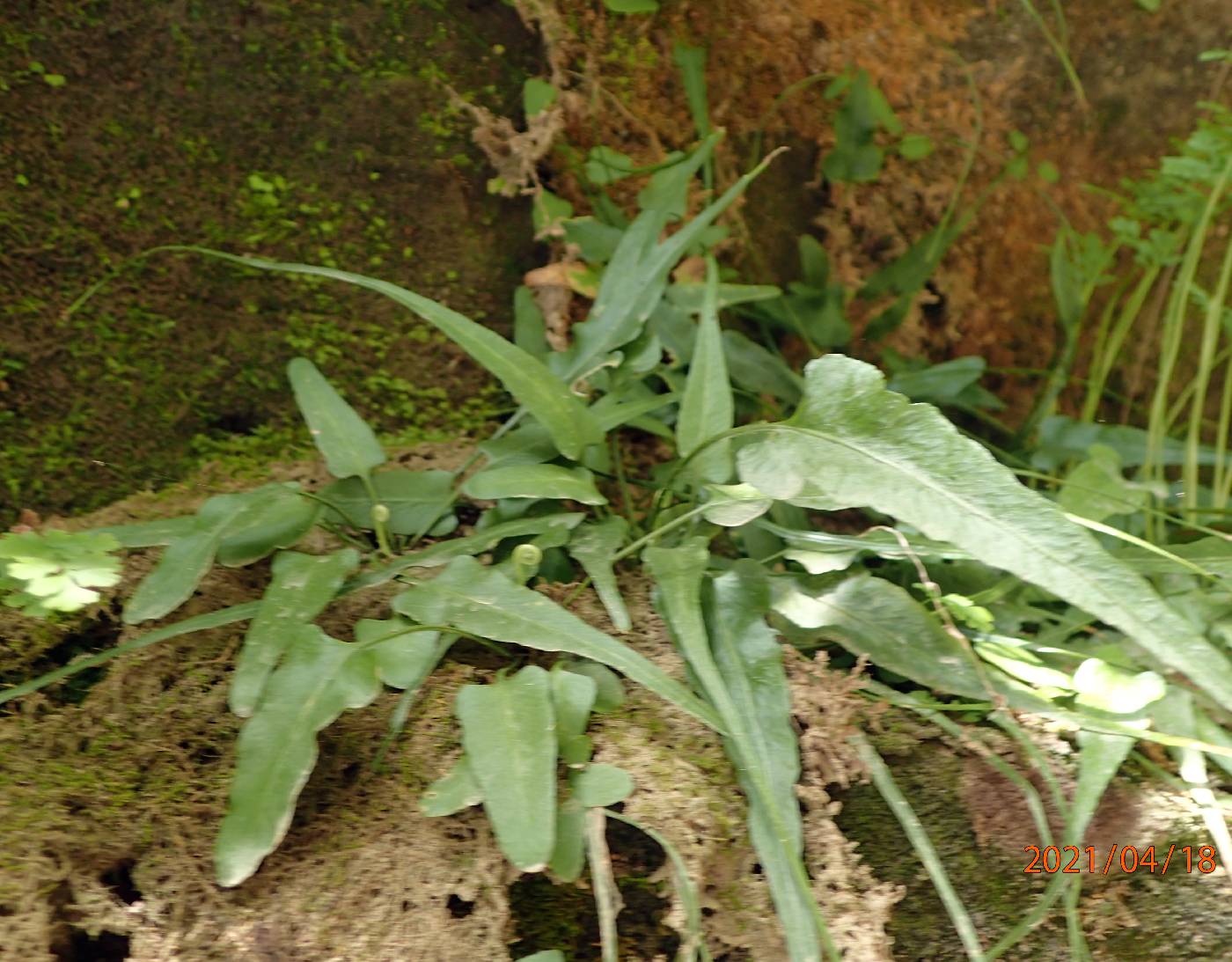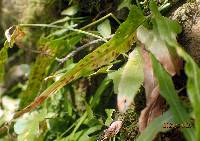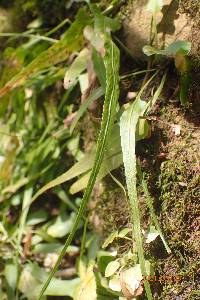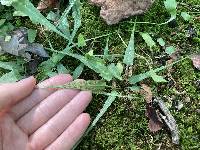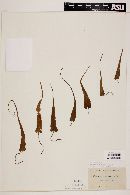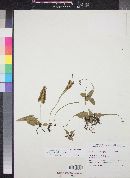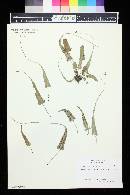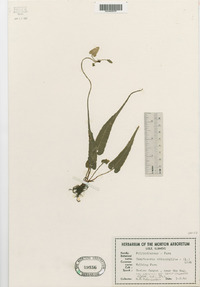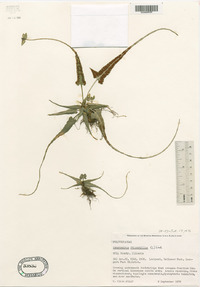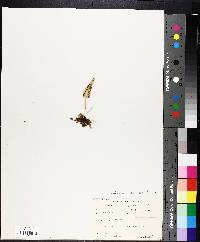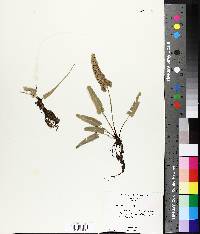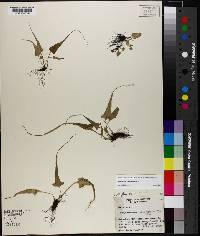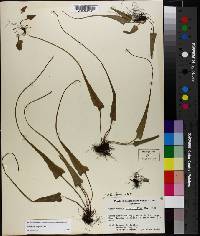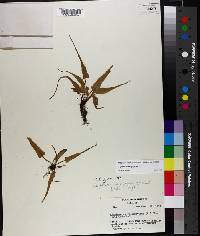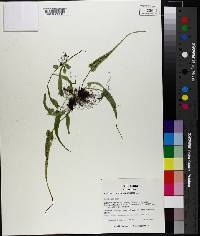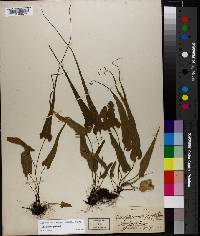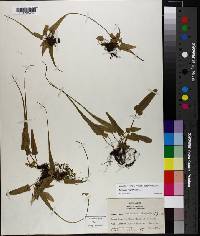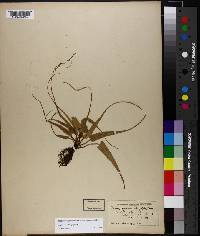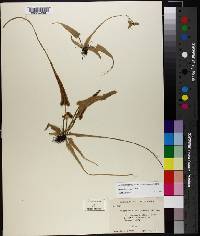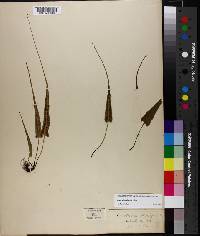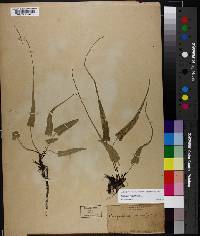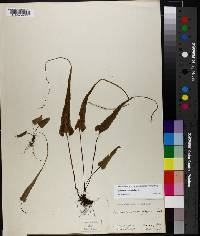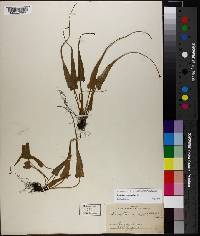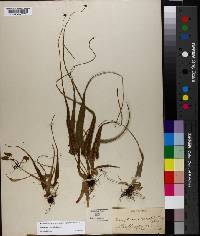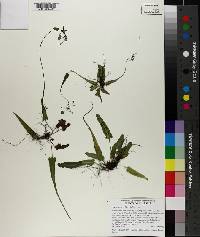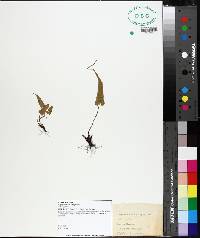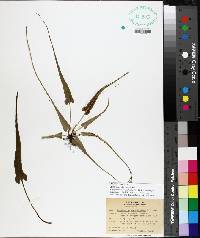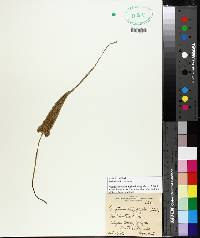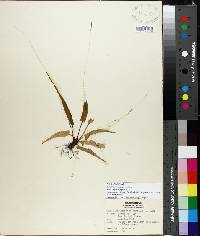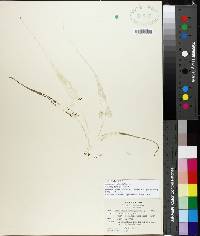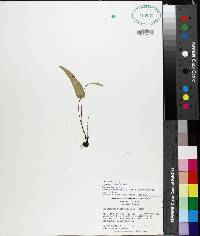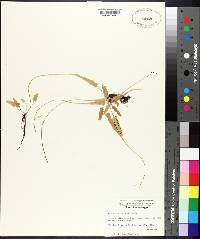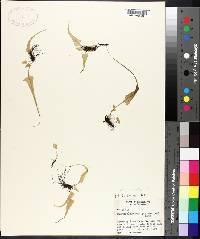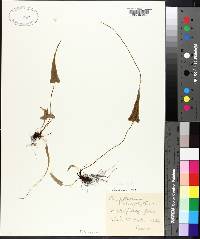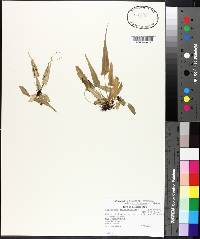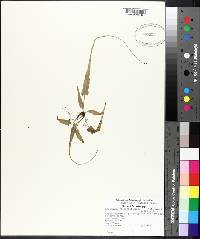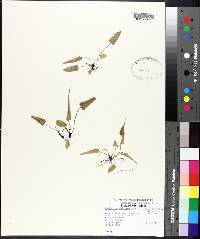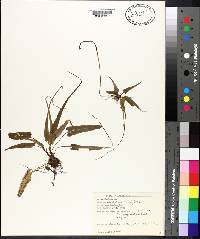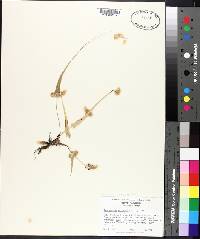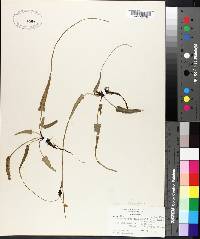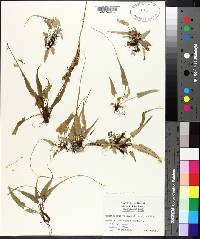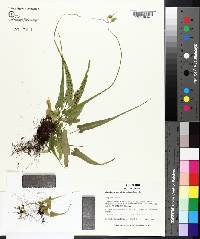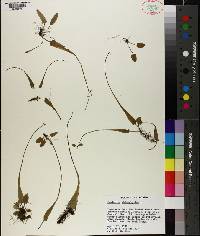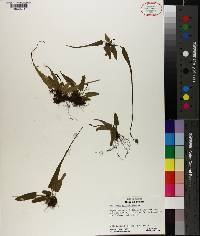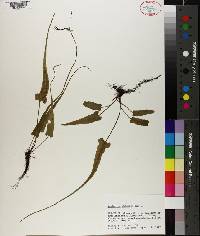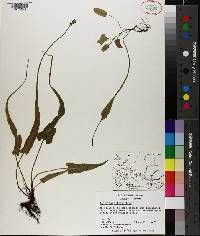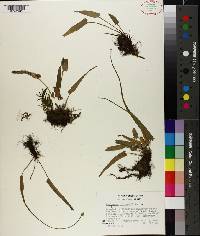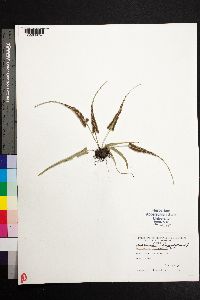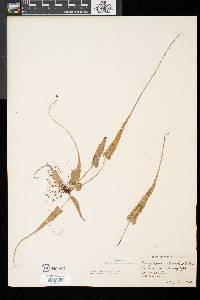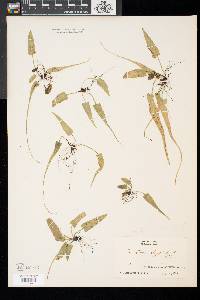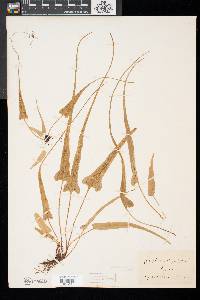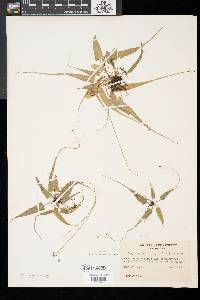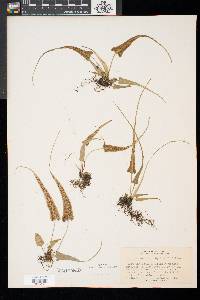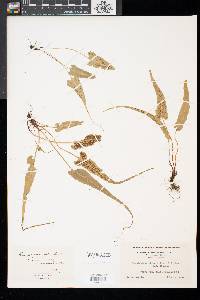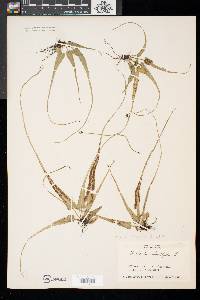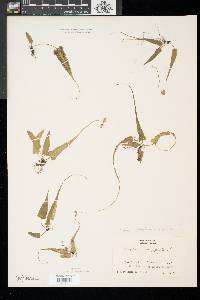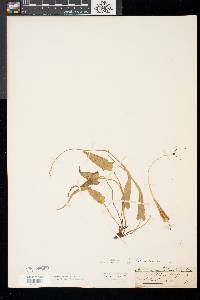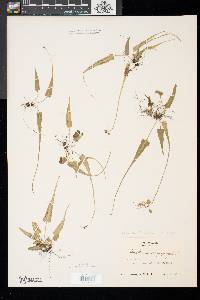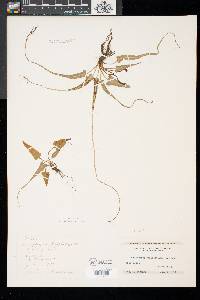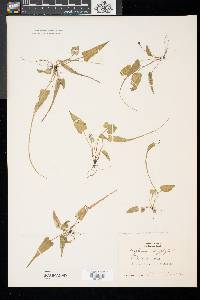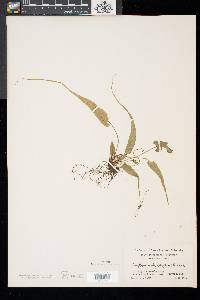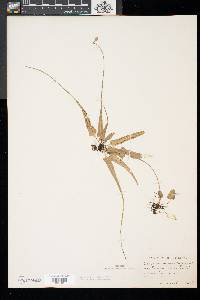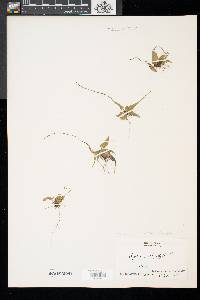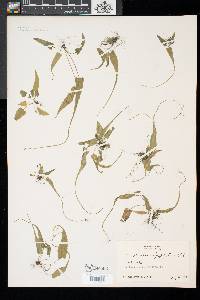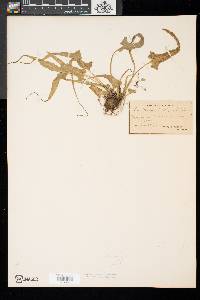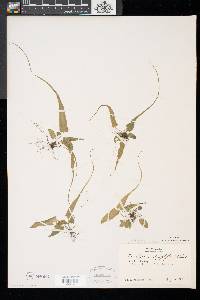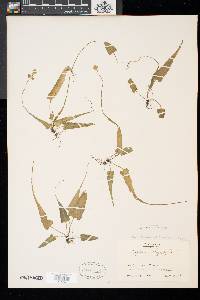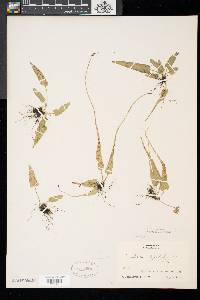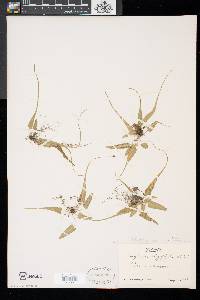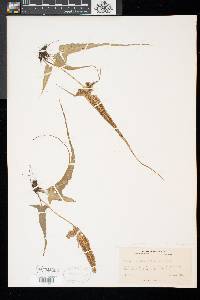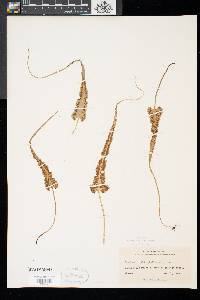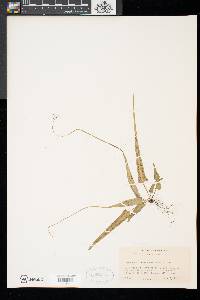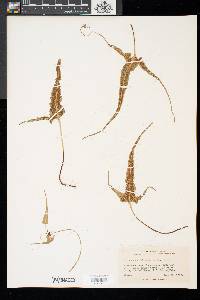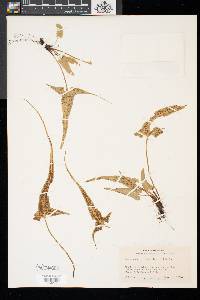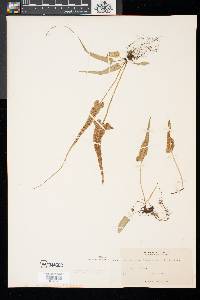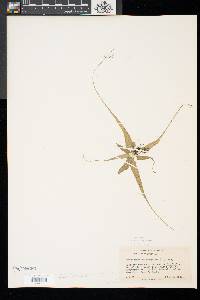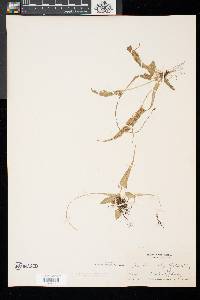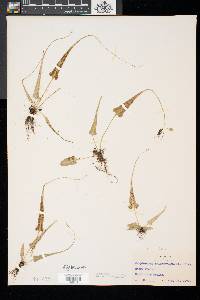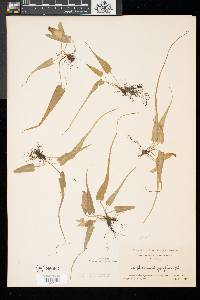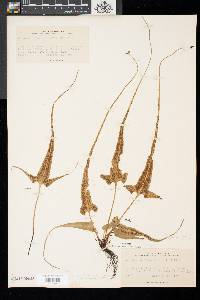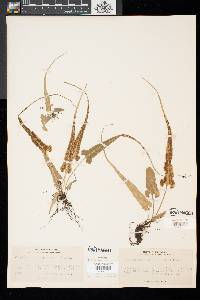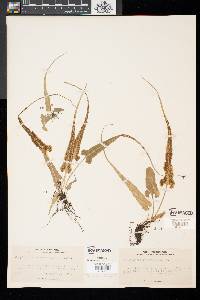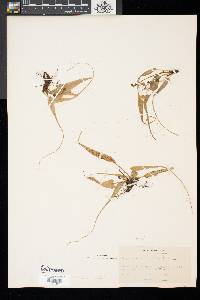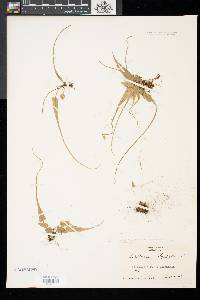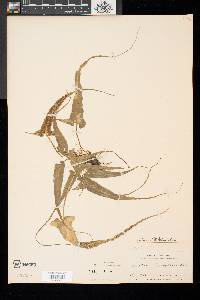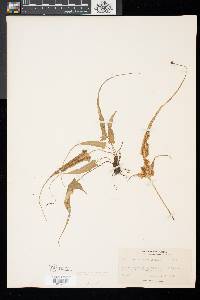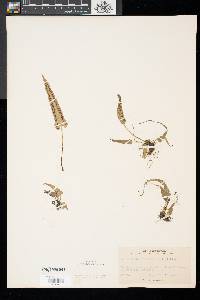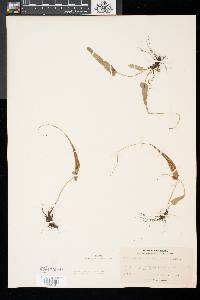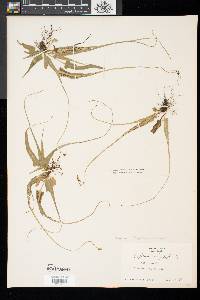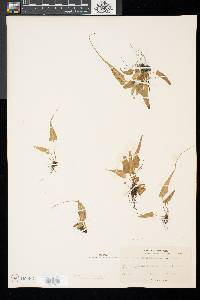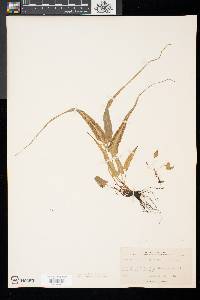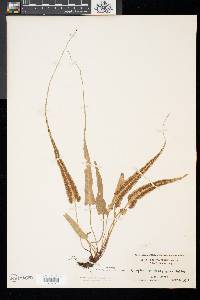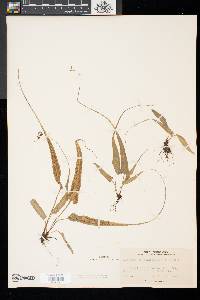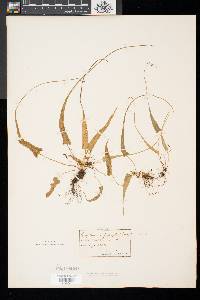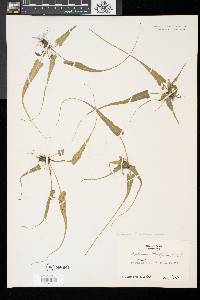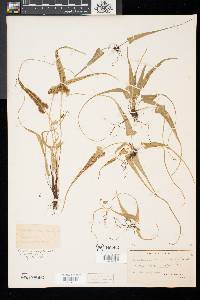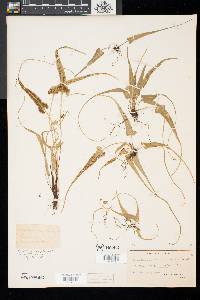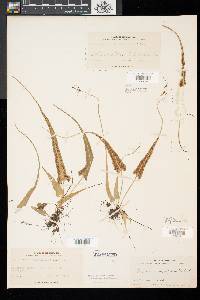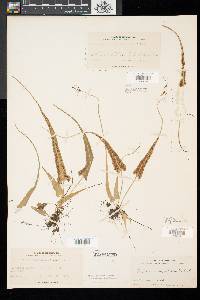
|
|
|
|
Family: Aspleniaceae
Walking Fern
[Camptosorus rhizophyllus (L.) Link, moreCamptosorus rhizophyllus f. auriculatus Clute, Camptosorus rhizophyllus f. boycei C. L. Wilson, Scolopendrium rhizophyllum (L.) Endl.] |
Roots not proliferous. Stems erect or ascending, usually unbranched; scales dark brown throughout, narrowly deltate, 2--3 × (0.2--)0.5--1 mm, margins entire. Leaves monomorphic but fertile leaves generally larger than sterile leaves. Petiole reddish brown at base, becoming green distally, dull but sometimes lustrous at base, 0.5--12 cm, 0.1--1.5 times length of blade; indument of dark brown, narrowly deltate scales at base, of minute, club-shaped hairs distally. Blades highly variable in size and shape, even on 1 plant, narrowly deltate to linear-lanceolate, simple, 1--30 × 0.5--5 cm, leathery, sparsely pubescent, hairs more numerous abaxially than adaxially; blade base cordate, auriculate, or occasionally hastate, auricles rarely attenuate and radicant; margins entire to sinuate, rarely irregularly incised; apex rounded to very long-attenuate and, if attenuate, generally rooting at tip. Rachis green, dull, nearly glabrous. Veins obscure, anastomosing to form areoles near midrib. Sori numerous, scattered somewhat irregularly over blade, often joined at vein junctures. Spores 64 per sporangium. 2 n = 72. Shaded, usually moss-covered boulders and ledges, usually on limestone or other basic rocks, but occasionally on sandstone or other acidic rocks, rarely on fallen tree trunks; 0--1000 m; Ont., Que.; Ala., Ark., Conn., D.C., Ga., Ill., Ind., Iowa, Kans., Ky., Maine, Md., Mass., Mich., Minn., Miss., Mo., N.H., N.J., N.Y., N.C., Ohio, Okla., Pa., R.I., Tenn., Vt., Va., W.Va., Wis. Asplenium rhizophyllum , a diploid species, is morphologically very distinctive within Asplenium and is segregated by many authors, along with its sister species A . ruprechtii Kurata of eastern Asia, into the genus Camptosorus Link. Proliferations arising from leaf tips result in the formation of clonal patches, often dense and extensive, on the mossy boulders and ledges where it typically grows. Naturally occurring sterile hybrids are known with A . platyneuron (these and their fertile allotetraploid derivatives are both referred to A . ebenoides ), A . ruta-muraria ( A . × inexpectatum E. L. Braun ex C. V. Morton), A . trichomanes subsp. trichomanes [ A . × shawneense (R. C. Moran) H. E. Ballard], and A . ebenoides . In addition, the allotetraploid A . pinnatifidum is derived from the hybrid A . montanum × rhizophyllum ; the sterile diploid hybrid is unknown.
Perennial fern 2 - 40 cm tall Leaves: one to several, clustered, stalked, greenish, dull, leathery, sparsely hairy (more hairs on underside), simple (not divided), 1 - 30 cm long, 0.5 - 5 cm wide, long triangular to linear or lance-shaped, usually with heart-shaped or lobed base, and sometimes wavy edges. The leaves are quite variable in size and shape, especially at the tips, which may be rounded or very long-tapered and pointed, with very tip often rooting to form a new leaf-bearing plant. Rhizome: erect or ascending, usually unbranched, short (under 5 cm), about 2 mm thick, and covered with dark brown, 2 - 3 mm long, 0.2 - 1 mm wide, somewhat triangular scales. Leaf stalks: reddish brown near base, then green, 0.5 - 12 cm long, flattened, with sparse, minute, dark, club-shaped hairs. Spores: 64 per sac, all of one kind, tiny, single-sectioned (monolete), and single-chambered. The spores give rise to the gametophyte (the sexual phase of the plant), which is tiny, green, and heart-shaped. Similar species: Asplenium rhizophyllum is a very unique fern in the Chicago Region due to its simple (undivided) leaves that root at the tips. Our only other species of Asplenium, A. platyneuron, differs by having pinnately compound leaves, it never roots at the leaf tips, and has a more wide habitat distribution with preference for more acid soils. Habitat and ecology: Somewhat rare, in shaded limestone canyons, requiring more basic substrates. Occurence in the Chicago region: native Notes: This species of Asplenium is quite unique in its habit of rooting at the leaf tips. Due to this feature, many researchers have placed this taxon in a separate genus, Camptosorus. However, A. rhizophyllum does frequently hybridize with other species of Asplenium (A. platyneuron, and A. ebenoides for example), thus its separation into a separate genus is somewhat undesirable. There is a similar leaf-rooting species in Asia, A. ruprechtii, which is sometimes also placed into the genus Camptosorus. Author: The Field Museum Rhizome ca 2 mm thick, the scales lance-subulate, entire, dark brown, iridescent; petiole flattened, winged, green except at the dark brown scaly base; blade simple, 5-30 cm, undulate-margined, generally cordate at base with rounded auricles, to 3 cm wide at base, tapering gradually to a flagelliform rooting tip; veins anastomosing, the areoles mostly in 2 rows, the outer veinlets free; 2n=72. Mostly on rocks, esp. limestone; Que. and Ont. to Minn., s. to Ga. and Okla. (Camptosorus r.) Gleason, Henry A. & Cronquist, Arthur J. 1991. Manual of vascular plants of northeastern United States and adjacent Canada. lxxv + 910 pp. ©The New York Botanical Garden. All rights reserved. Used by permission. From Flora of Indiana (1940) by Charles C. Deam Infrequent in the southern part of the state, becoming rare to absent in the northern part. It grows in the shade in shallow soil on calcareous rocks on rocky ledges, usually along streams. It is not usually abundant unless it is found in deep shade and on rocks with considerable moisture. ...... Indiana Coefficient of Conservatism: C = 10 Wetland Indicator Status: n/a |

